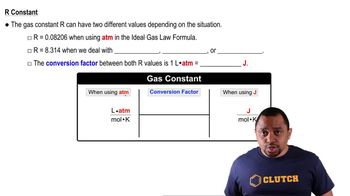Here are the essential concepts you must grasp in order to answer the question correctly.
Equilibrium Constant (Kc)
The equilibrium constant (Kc) is a numerical value that expresses the ratio of the concentrations of products to reactants at equilibrium for a given chemical reaction. It indicates the extent to which a reaction proceeds to form products. A higher Kc value signifies a greater tendency for the formation of products, while a lower Kc indicates a preference for reactants. In the context of hemoglobin, Kc reflects the affinity of hemoglobin for oxygen.
Recommended video:
Equilibrium Constant Expressions
P50 Value
The P50 value is a specific measure used to describe the oxygen-binding affinity of hemoglobin. It represents the partial pressure of oxygen at which 50% of the hemoglobin is saturated with oxygen. A lower P50 value indicates a higher affinity for oxygen, meaning that hemoglobin can bind oxygen more readily. In this case, fetal hemoglobin has a lower P50 than adult hemoglobin, suggesting it binds oxygen more effectively.
Recommended video:
Le Chatelier's Principle
Le Chatelier's Principle states that if a system at equilibrium is subjected to a change in concentration, temperature, or pressure, the system will adjust to counteract that change and restore a new equilibrium. This principle helps explain how changes in the environment, such as increased oxygen levels, can shift the equilibrium position of the hemoglobin-oxygen binding reaction. Understanding this principle is crucial for interpreting the differences in Kc values between fetal and adult hemoglobin.
Recommended video:
 Verified step by step guidance
Verified step by step guidance

